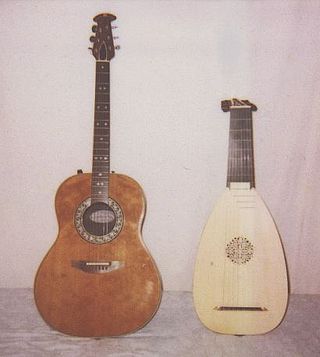Related Research Articles

In musical instrument classification, string instruments or chordophones, are musical instruments that produce sound from vibrating strings when a performer plays or sounds the strings in some manner.
Hornbostel–Sachs or Sachs–Hornbostel is a system of musical instrument classification devised by Erich Moritz von Hornbostel and Curt Sachs, and first published in the Zeitschrift für Ethnologie in 1914. An English translation was published in the Galpin Society Journal in 1961. It is the most widely used system for classifying musical instruments by ethnomusicologists and organologists. The system was updated in 2011 as part of the work of the Musical Instrument Museums Online (MIMO) Project.

Plucked string instruments are a subcategory of string instruments that are played by plucking the strings. Plucking is a way of pulling and releasing the string in such a way as to give it an impulse that causes the string to vibrate. Plucking can be done with either a finger or a plectrum.
Yoke lutes, commonly called lyres, are a class of string instruments, subfamily of lutes, indicated with the code 321.2 in the Hornbostel–Sachs classification.
References
- von Hornbostel, Erich M.; Curt Sachs (March 1961). "Classification of Musical Instruments: Translated from the Original German by Anthony Baines and Klaus P. Wachsmann". The Galpin Society Journal. 14: 3–29. doi:10.2307/842168. JSTOR 842168.